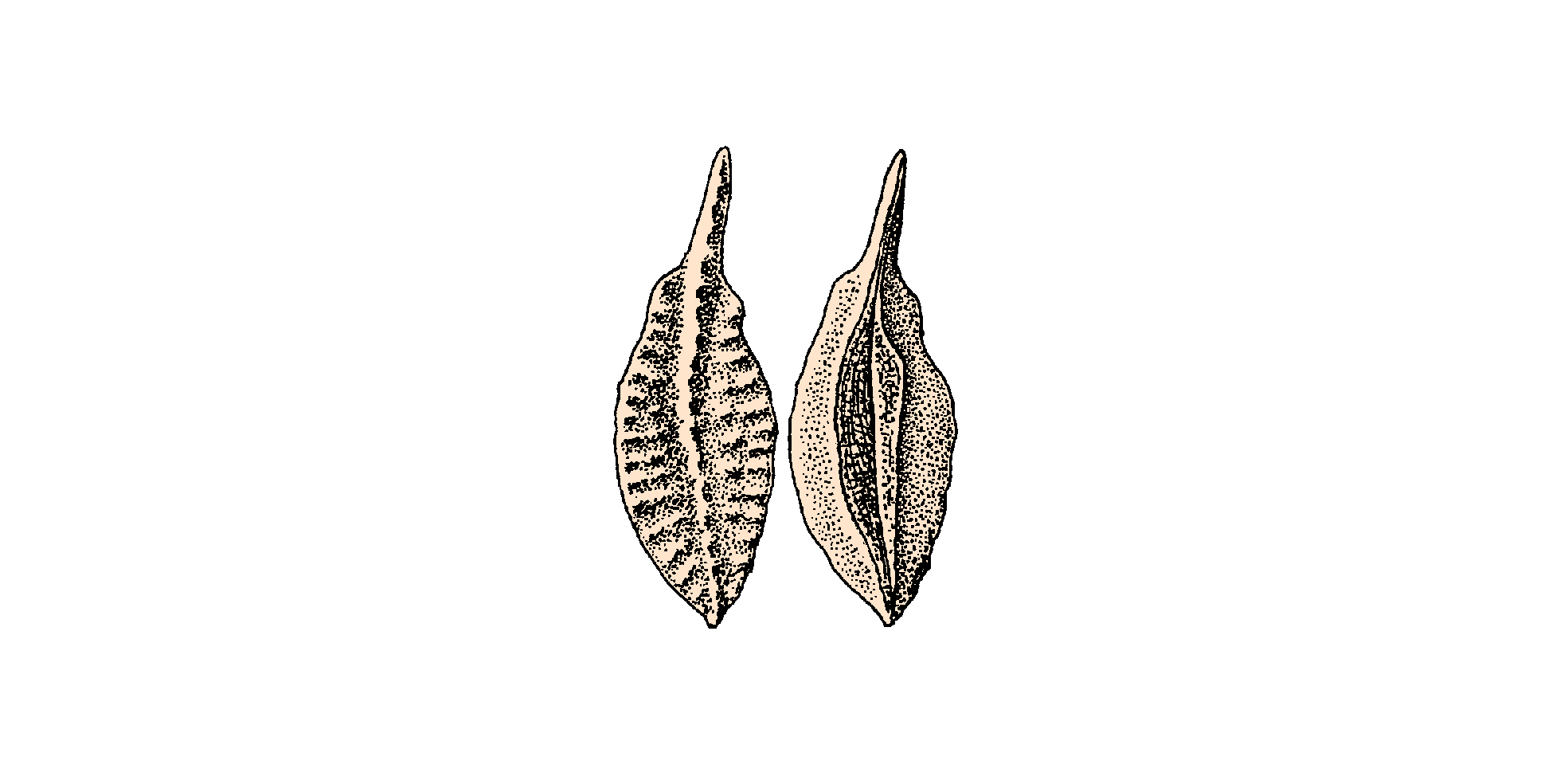Diagnoza
In mature P1 specimens the middle part of the platform is the widest and it is almost flat with the denticles of the blade somewhat elevated. Juveniles have a platform usually separated from the blade by a deep depression and the element has the greatest width at the dorsal end of the platform. Porównanie
Elements show mirror symmetry that makes unlikely any relationship to Alternognathus. Also the flat or somewhat inverted basal cavity makes it different from Alternognathus, where the base remains slightly concave and the margin of the basal cone remains sharp. Variability is expressed mostly in more or less robust transverse ribbing of the platform and in the dorsal margin of the platform, in juveniles being thin and wide or rather narrow and robustly tuberculated. Because of high population variability, this lineage does not seem to be especially useful in precise time correlation. Autekologia Występowanie geograficzne
Kowala and Dzikowiec. Zasięg czasowy
D. trigonica Zone. Materiały muzealne
ZPAL: 17 specimens. Literatura
Dzik, J. 1997. Emergence and succession of Carboniferous conodont and ammonoid communities in the Polish part of the Variscan sea. Acta Palaeontologica Polonica 42, 57-170. Dzik, J. 2006. The Famennian "Golden Age" of conodonts and ammonoids in the Polish part of the Variscan sea. Palaeontologia Polonica 63, 1-359. | 

